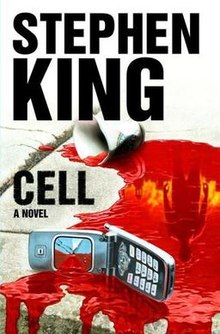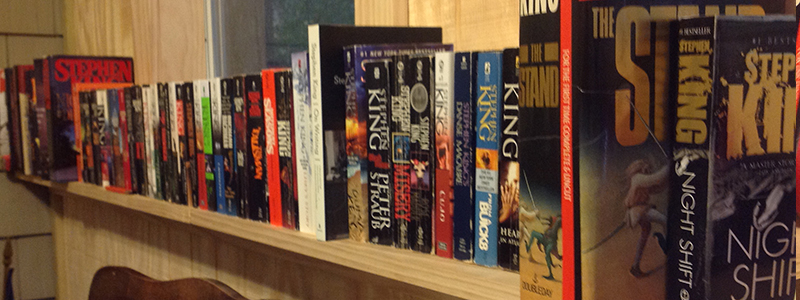by Jay Wilburn
The plan is to reread all of Stephen King’s works in the order that they were published. Richard Chizmar of Cemetery Dance had the vision. I’m doing it because I am a writer and I want to improve my fiction. And I love Stephen King’s stories. I think there is something to be learned through this process.
You can also go back to the beginning and read Before Carrie or any of my other posts up through this one and beyond by checking out this link to the Master List of all my #StephenKingRevisited posts.

My hardcover copy of Cell still has the 40% off sticker on the upper left hand corner of the dust jacket. I bought it as soon as it hit the shelves. I never understood why books were discounted when they were brand new back in the heyday of brick-and-mortar bookstores. A new release from a big author that was everywhere probably placed a lot of pressure to move the copies you had.
I really enjoyed a piece Brian Keene wrote about Cell. I read it on his Patreon page, but messaged him to be sure it was public before I referenced it here. He’d written an essay about the book which appeared on the inside flaps of the dust cover for a release or a special rerelease of the novel. Jack Ketchum was once referred to as Stephen King without a conscience and that tag stuck. Brian Keene called Cell an example of Stephen King writing like Jack Ketchum without a conscience. It is a pretty splattery book and it was a great essay by Keene.
The book is dedicated to Richard Matheson and George Romero. That alone should frame the story nicely.
The descriptions of two girls that the main character dubs as Pixie Dark and Pixie Light have stuck with me for years since reading this book. As literary devices, they serve the themes of violence in the story nicely from the beginning and create a framework for understanding the nature of the Pulse that came through cellphones to scramble people’s minds, turning them into something else and evolving them over the course of the novel. The evolution of the phoners is interesting and makes the story into something different than Matheson or Romero, although their combined influence on the work is clear.
A memory of the slow-moving Red Sox victory parade after the World Series win is used early as the apocalyptic crisis unfolds with our characters in the middle of Boston. Red Sox references and gear play significant parts in the story as markers for various plot points, characters, etc. I’m sure the Sox were on Stephen King’s mind following the win and after publishing the nonfiction account of the 2004 season in Faithful. Storywise, the references work well.
Good old Juniper Hill gets mentioned. How is that facility still open after every horror seen there?! TR-90 returns. This is an unincorporated track of land that appears in Bag of Bones and The Girl Who Loved Tom Gordon among other stories. A Charlie the Choo Choo ride is at the fairgrounds later in the novel. This was an important piece from the Dark Tower series.
They are still using flip phones at the time this was published in 2006. At one point, the characters try to speculate how many cellphones there were in Boston. There wasn’t an assumption in 2006 that everyone had one quite yet. One character says that they read somewhere that in China there were as many cellphones as there are people in America. Of course, cellphones outnumber people on Earth a decade and a half later. King mentions in the author notes that he did not have a cellphone as of the publication of this book.
Recordable CDs were state of the art technology at the time this was written. There is a reference to a beef between Eminem and Moby that I barely remember.
The cartoonist main character adds an interesting perspective to description in the story. King used him very well throughout the journey.
Everyone starts having the same dreams as tends to happen in Stephen King’s universe on the regular.
The “phoners” staring through windows at our heroes inside a house is a great, unnerving scene.
What lies beneath our humanity and what is unleashed when it is erased down to the core programming fuels the story.
“Some problems are solved by fire” is a good theme for this book. “We made a mistake” is a simple but powerful line that shapes the fate of the characters through the second half of the novel. A father must make the leap of faith in one last ditch effort to try to save one soul from all that has happened. Will it work?
I didn’t remember all the ins and outs of this story clearly from my first reading. Revisiting the story has raised it in my esteem. I’m glad I revisited it.
My next post in this series will be Before Lisey’s Story which will be linked on the Master List of all my Stephen King Revisited posts.





